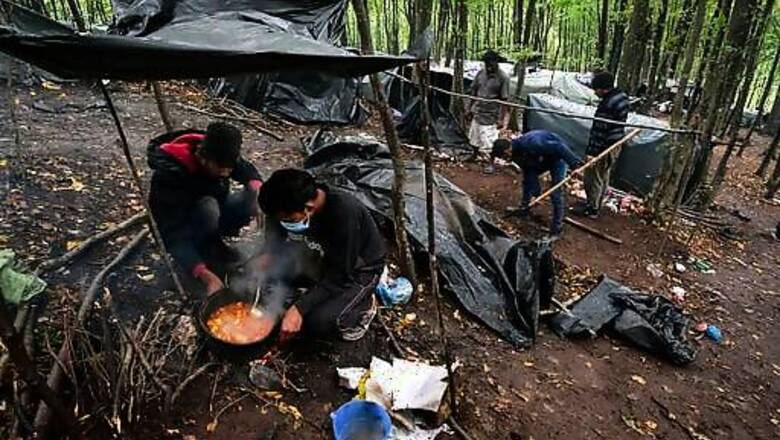
views
VELIKA KLADUSA, Bosnia-Herzegovina: Remote woods, abandoned run-down buildings and roadsides in northwestern Bosnia are steadily filling with makeshift camps where migrants and refugees from the Mideast, Asia and North Africa are bracing for more misery as autumns chill and rains set in.
A sense of desperation hangs over the hundreds of men and boys who have been forced to build tents from sticks and black plastic tarps in the forests after local authorities in Bosnia’s Krajina region decided last month to start pushing them away from town centers, even kicking them out of U.N-run reception centers there.
Krajina shares a highly porous 1,000 kilometer (620 mile) border with European Union member Croatia, making it a major draw for migrants crossing Bosnia. Local authorities say they are bearing the brunt of Europe’s lingering migration issues and other parts of impoverished Bosnia are failing to help out.
The EU has provided Bosnia with 60 million euros ($70 million) in emergency funding, most for seven migrant centers, including five in Krajina, which can house more than 7,000 people.
However, Krajina authorities have begun emptying the reception centers and driving the migrants into desolate areas to fend for themselves with no access to medical care or sometimes even food. In response, the police forces of adjacent regions have started blocking migrants from walking back to their areas.
Aid organizations and volunteers helping migrants in Krajina warn that the situation is shifting quickly into a crisis as the number of migrants scavenging the forests for food and bathing in the frigid rivers keeps growing.
Bosnia, which has never truly recovered from its brutal 1992-95 war, became a bottleneck for thousands of Europe-bound migrants three years ago when other nations closed their borders and disrupted migration paths through the Balkans.
Disclaimer: This post has been auto-published from an agency feed without any modifications to the text and has not been reviewed by an editor



















Comments
0 comment